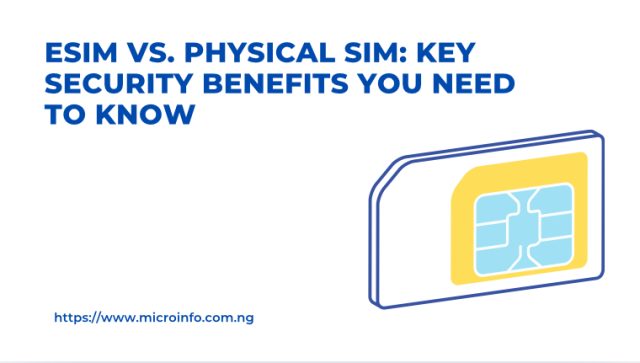Technological innovation has consistently introduced advanced security measures like embedded SIM (eSIM), which are revolutionizing the way we use and protect our mobile devices by offering numerous benefits. While the simplicity and flexibility that eSIM technology provides set it apart from physical SIMs, its security is another important benefit that makes it appealing to customers, even though the eSIM business is expected to be worth more than $5 billion by 2030, with a 29% annual growth rate. As a result, it is necessary to understand eSIM security.
Table of Contents
eSIM’s Security Advantages
Reduced susceptibility to damage and theft.
eSIMs successfully reduce damage and theft vulnerabilities. Unlike a physical SIM card, an eSIM does not need to be carried around. As a result, the likelihood of losing or injuring the SIM card decreases. In most cases, eSIM technology is suitable for travelers because it eliminates the need for them to carry SIM cards on their journeys. You can quickly switch between local network operators to ensure a continuous connection. Many devices are compatible with eSIM, so you can configure it on Android phones, iPhones, and Windows devices.
Security against unauthorised access and fraud.
Hackers will find it nearly impossible to gain unauthorized access to your device thanks to the eSIM technology. The activation of security levels and authentication increases the sophistication of your protection, ensuring that access to your personal information is not compromised, as is the case with physical SIM cards.
Furthermore, the technique protects against SIM-swapping fraud, in which hackers replace a victim’s SIM card to get access to their accounts. This is quickly gaining popularity as one of the top cryptocurrency scams. Hackers cannot alter the SIM card and gain unauthorized access, thanks to eSIM security standards. Other fraud-prevention features of eSIM include protection against port-out scams and SIM cloning. The system secures communication by using modern encryption and authentication procedures, providing consumers with a safer environment.
Remote provisioning and management.
eSIMs may be programmed and maintained remotely, allowing network operators to respond rapidly to security risks and update SIM card configurations as needed. As a result, you can remotely disable your eSIM on your smartphone, as opposed to managing regular SIM cards, which require you to contact your operator or walk a long distance to their office.
In essence, eSIM technology lowers the risk of security breaches and assures that devices are up to date with the most sophisticated security fixes.
Vulnerabilities of eSIM technology While eSIMs provide significant security benefits, you should be aware of some potential hazards and problems.
Some examples are:
Malware Attacks: Malware can infect a device’s firmware and obtain access to the eSIM data it contains. This flaw enables attackers to steal sensitive information such as authentication passwords, phone numbers, and other personal data.
Hackers may employ social engineering techniques to deceive consumers into disclosing their eSIM credentials or other sensitive data. For example, an attacker may impersonate a mobile network operator and request that consumers supply their eSIM information for verification.
Remote Hacking: A remote attack may exploit flaws in the eSIM’s firmware or communication protocol to obtain unauthorized access to the device or the eSIM data stored on it. As a result, mobile network operators and device makers must mitigate these vulnerabilities by deploying robust security measures such as secure protocols, encryption, and regular firmware updates.
Users can also take safety precautions, such as installing security software and avoiding questionable emails or messages. Best practices for eSIM security
The best practices for ensuring the security of eSIMs are the following:
Strong Authentication: To secure communication between the device and the network operator, use authentication protocols like Elliptic Curve Cryptography (ECC).
Use Encryption: Encrypt sensitive personal and financial information.
Use reputable network providers: To protect eSIMs, you must use network providers who have put in place strong security procedures.
Conclusion
eSIM technology has various security benefits, including reduced vulnerabilities and fraud protection, making it superior to physical SIM cards. However, there are certain eSIM problems that you should be aware of, some of which have been discussed in this article. To keep your personal and financial information safe and secure, you must use the greatest security procedures when utilising eSIM.




